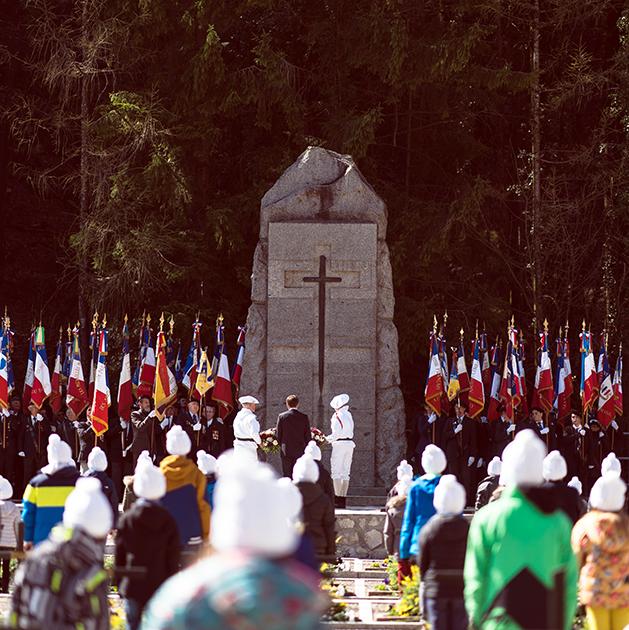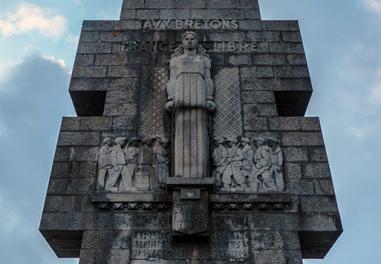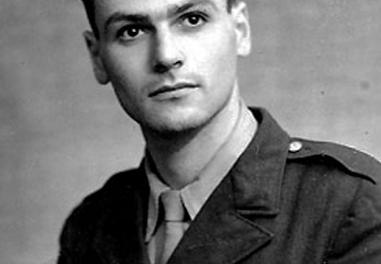75 years ago: Liberation
At the close of a four-year remembrance cycle devoted to the First World War, 2019 saw commemorations of the Second World War, and more specifically the 75th anniversary of the D-Day landings and the liberation of France.

1944 was a year of transition, marked by the arrival, by sea or by air, of French and Allied forces, the fighting of the maquis, the extraordinary jubilation of the liberated population, but also by horrific events like the massacres of Tulle, Oradour-sur-Glane and Maillé.
In line with the remembrance policy set out by the state secretary to the Minister for the Armed Forces, the Directorate for Heritage, Remembrance and Archives (DPMA) drew up a commemorative programme for 2019 which followed the course of the progressive liberation of France, between June and November 1944.
In the footsteps of the liberators
The cycle included national and international ceremonies in honour of the actions of the Resistance and the courage of the French and Allied troops who landed on the coast of France, as well as the suffering of the civilian population, who were subjected to bombardments and acts of violence by the retreating German forces. This season of remembrance began on 21 February, with a ceremony at Mont Valérien in memory of the execution of Missak Manouchian and his “Affiche Rouge” group. Presided over by the state secretary to the Minister of the Armed Forces, the event gave pride of place both to Armenian veterans and to schoolchildren – several generations joined in homage to members of the Francs-Tireurs et Partisans-Main d’Oeuvre Immigrée (FTP-MOI) movement. On 31 March, the French President paid tribute to the Resistance at Morette military cemetery (Haute-Savoie), in memory of the fighting on the Glières plateau.
6 June marked the 75th anniversary of the Normandy landings. An international ceremony, presided over by the French Prime Minister, was held at Juno Beach Centre, in Courseulles-sur-Mer (Calvados), in late afternoon. In the morning, a national tribute to Kieffer Commando had been held in Colleville-Montgomery. The event was presided over by the French President, with Léon Gautier, one of the last three surviving members of Kieffer Commando, in attendance.
The Resistance were remembered once again on 21 July, with a ceremony to commemorate the fighting of the Vercors maquis, at Vassieux-en-Vercors military cemetery (Drôme), attended by the state secretary. 15 August was the anniversary of the Provence landings of 1944. A national ceremony was held at the national military cemetery of Boulouris (Var), presided over by the French President and attended by two foreign heads of state and many ambassadors of the Allied countries. Some 50 veterans who took part in the landings were also present. The cycle extended into the Netherlands, where the state secretary was a guest of the royal family on 31 August to commemorate the country’s liberation.
The 2019 remembrance season came to a close in November, with a cycle rally to mark the liberation of Strasbourg, organised by the 2nd BB (2nd Armoured Brigade, heir to the 2nd DB), in aid of wounded army veterans, and an exhibition of work by the DPMA, complemented by objects loaned by the 2nd BB’s regiments, on display at the military governor’s palace in Strasbourg. The ceremonies to commemorate the city’s liberation took place on 16 and 17 November.
Commemorating – with whom?
These different ceremonies provided an opportunity for large numbers of schoolchildren to carry out topic work on remembrance and play a real part in the commemorations, by reading historical texts and testimonies. For instance, at the ceremony held in honour of those killed by firing squad at Mont Valérien, in February, students read out extracts of letters written by the condemned men. In preparation for the event, their teachers introduced them to the historical background to the anniversary, and to issues surrounding remembrance linked to its commemoration. Besides the children, it is the presence of those who took part in the events being commemorated that gives a particular poignancy to the occasion. Having them participate represents an invaluable opportunity, and we are very fortunate.
Sadly, time marches on and the last survivors will inevitably pass away. But on this 75th anniversary of the landings and liberation, we were blessed with the presence of veterans of the Normandy landings of 6 June 1944, like Léon Gautier, veterans of the 1st Army who landed on the coast of Provence in August 1944, and former members of the Vercors maquis.
Promoting the regions
Although organised at national level, it is in the regions that these commemorations really find concrete expression, due to the mobilisation of local actors on whom the DPMA relies (the departmental offices of the National Office for Veterans and Victims of War, departmental military representatives, prefectures of the departments concerned), and their unparalleled knowledge of their regions and the local voluntary sector. It is in the regions, too, that one has a real sense of the mobilisation and appetite of our fellow citizens for remembrance issues, through the hundreds of cultural, educational and commemorative projects that have emerged.
The DPMA put in place a specific 75th anniversary labelling policy, designed to encourage and promote these actions. It sought above all to ensure the involvement of local communities in the different ceremonies, in view of how keen they were to participate in events linked to the history of their town or region, such as those held in Normandy on 6 June or at the Boulouris military cemetery, in the Var, on 15 August.
Commemorations call on those present to remember a past event, as much as they focus on the place where it happened. A remembrance event is an opportunity to introduce our fellow citizens to the importance and richness of our heritage. The Memorial of Combatant France in Suresnes, the Normandy landing beaches, Boulouris National Cemetery, the Leclerc Monument in Strasbourg are so many remembrance sites imbued with meaning that are waiting to be discovered and promoted during the commemorative cycles.
Read more
Articles of the review
-
The file

Liberating France
The Allies that landed in occupied France on 6 June and 15 August 1944 undeniably contributed to the country’s liberation, the uprising of the people and the mobilisation of the Resistance. But they did not act alone. The French armed forces were also involved, from the Normandy beaches to the liber...Read more -
The figure

The Free France Foundation
For the 75th anniversary of liberation, the Free France Foundation brings its network and dynamism into play to organise a rich programme of events to honour and celebrate the Free French who distinguished themselves in 1944 and 1945.
Read more -
The interview

Pierre Simonet
Enlisted in June 1940 in the Free French Forces, Pierre Simonet took part in many campaigns, including Syria, Libya, Tunisia and Italy, before landing in Provence in August 1944. He is today one of only three surviving Companions of Liberation.
Read more

